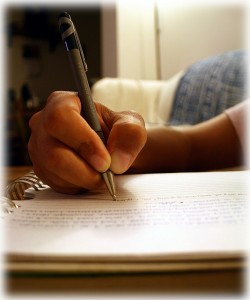--Original published at HarrysCollegeBlog
Characterizing human behaviors into personalities can seem simple on the surface, but aren’t as accurate as we’d like them to be. Nothing can come close to real human behavior, but it can get into a range that lets us generalize them into categories. These 4 personality quizzes we took all did this to some degree, some better than others. For the sake of simplicity, all of the quizzes put me in INTP, which is a fairly accurate description of my personality type, being introverted, intuitive, thinking and perceiving. I also will be talking about them in order as they appeared on the assignment page at Dr. Macfarlane’s website.
The first Personality quiz was set in a format where it would ask you a question, and you had to pick how often you did said question on a scale from very likely, to not very likely. This one I Liked a lot, considering it took into question how often you performed such actions, and how likely you were to do them. It really shone in that area, and even gave a percentage of how much of that personality type you were.
The second personality test had a multiple choice style for the questions, although compared to the others, it was quite inaccurate. It only had 2 answers per question, and didn’t seem to capture the depth to a human’s character, given the lack of freedom of choice, and having to decide between two options. The results screen also had a lack of reasoning as to why i was that personality type, no percentages like the last one, just the result.
The third one was very similar, with the same basic idea of the questions being asked, and 5 selections on a range from not very likely, to very likely. Although this one had a lot less answers to fill in, which made it a lot more convenient, since it took less time out of my day to get my result. what was interesting was that it put up after submitting, before you got your results, it would ask if you wanted your results to be used in a study, and if you were willing to answer a few questions for the study’s sake. It had no effect on it, but it seemed that the creators took our privacy into thought when making it. The result screen was also very detailed, giving exact stats, Factors, a graph, and the score percentile. A lot of work was put into this short quiz, and you can tell when taking it as well.
The final Quiz was perplexing, it gave only a single question at the beginning, asking what your sex was, before going into a test with 8 color boxes on the screen, telling you to click on them all, and the question after asking you to replicate that same process. It then gave a detailed explanation based off which colors I chose, the order I chose them in. surprisingly enough, despite me choosing 2 and clicking randomly, it was able to pinpoint my personality, and even my strengths and weaknesses, preferences, and objectives. it perplexed me to see how something as simple as color could offer so much insight into my personality. Or this might just be a coincidence that I happened to land on the combination that lead to this result, im honestly not sure with this test, not as straight forward in how you took it.
The quizzes gave me an overall good luck into my own personality, me being relatively quiet, shy, detail-focused and trusting to a fault. Demanding reciprocal loyalty and honesty, while being overall bad in crowds, needing to take time to myself in peaceful environments. all 4 tests were able to get these basic ideas of my personality, some better than others, and in simpler, more perplexing ways.
